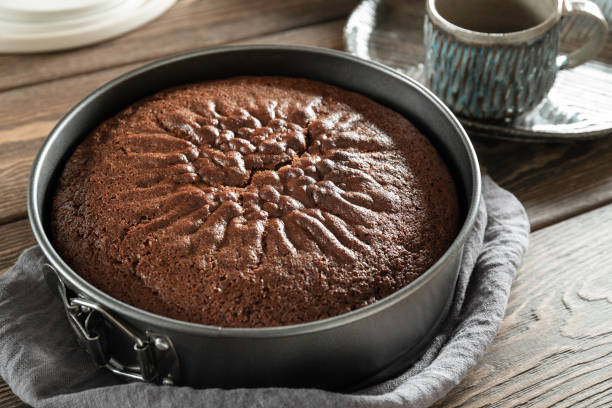We celebrate all milestones in life with a piece of cake, from birthdays to holidays and weddings. The right type of flour is essential for baking great baked goods. It can be difficult to choose the right type of cake pan for you due to the wide range of options.
After choosing the right cake pan, learn how to cut cakes without damaging the contents.
Traditional Cake Pans
Traditional cake pans can be square, rectangular, or round and are ideal for baking many cakes. Traditional cake pans are available in many sizes. However, all of them have straight sides and flat bottoms. This allows you to layer or torte the cakes. Traditional cake pans make a great canvas for cake decorators and anyone learning how a cake is frosted.
Springform Pans
Springform pans come with a removable bottom, adjustable sides and a clamp to keep them in place. After the cake has cooled, lift the clamp to open the sides. The bottom of the pan can be left under the cake for serving, or you can remove it carefully.
Silicone Cake Molds
Silicone moulds can be used to make small pastries or cakes. They are also a great way to make a variety of desserts at once. The mould’s flexible silicone material makes removing the desserts once they are cooled. The silicone material is oven-safe and does not require lining. However, some recipes may benefit from lightly greasing the mould before baking.
Bundt Pans
Bundt pans are designed to make ring-shaped cakes with holes in the centres. After cooling, these cakes can be turned upside down in the pan. Bundt pans are designed with either rounded or angular bottoms. This allows for intricate designs and rounded cakes. Deep cakes bake quicker and evenly than regular round cakes of the same dimensions due to the hole in the middle.
Cupcake Pans and Mini Cake Pans
You can bake several small cakes simultaneously with mini and cupcake pans with multiple indentations to hold the batter. Although serving sizes may vary, a standard muffin pan can make 12 cupcakes. When used with muffin cups, these pans can be used to make several identical portions and release quickly. Caterers and pastry chefs might choose mini or cupcake pans to create desserts.
Cake rings
Cake rings are taller than traditional pans and can make layered cakes. However, cake rings are not affixed to the bottom, so bakers can slide the ring up or off after cooling the cake. Although cake rings were the precursor to the springform, they are still very popular. Cake rings are still the best choice for cakes made with very wet ingredients.
Tube Pans and Angel Food Cake Pans
Angel food pans (also known as tube pans) are ring-shaped with high sides that can be straightened or tapered. The pans come in two pieces, which can be used to bake and then separate for cooling. The pan’s bottom and centre tube are one piece, while the sides and bottom of the pan make up the other. Like Bundt Pans, the centre tube allows faster baking as heat can surround the inner part of the cake.
Sheet Cake Pans
Sheet cake pans are rectangular, shallow pans that have rounded edges. These pans are typically 1 inch in-depth and can be used to make sheet cakes or for the base of cake rings. These pans are versatile and can feed groups of any size.
Unique Cake Pans
These novelty cake pans feature tall sides and flat bottoms. You can choose from various shapes, including a heart, petal, diamond, or pillow. Because there are more sides or corners for the cake, novelty pans must be greased. This will ensure that your cake is released cleanly. You can bake creative cakes with novelty cake pans without spending time or doing any detailed sculpting.
Jelly Roll Pans
Jellyroll cake pans have a 1-inch rim and are designed for baking thin cakes that can be rolled. The use of parchment and pan liners aids in rolling and prevents rolled cakes from sticking to the bottom. Although they were created to serve a specific purpose, jelly roll pans can be used for a wide range of cooking purposes.

